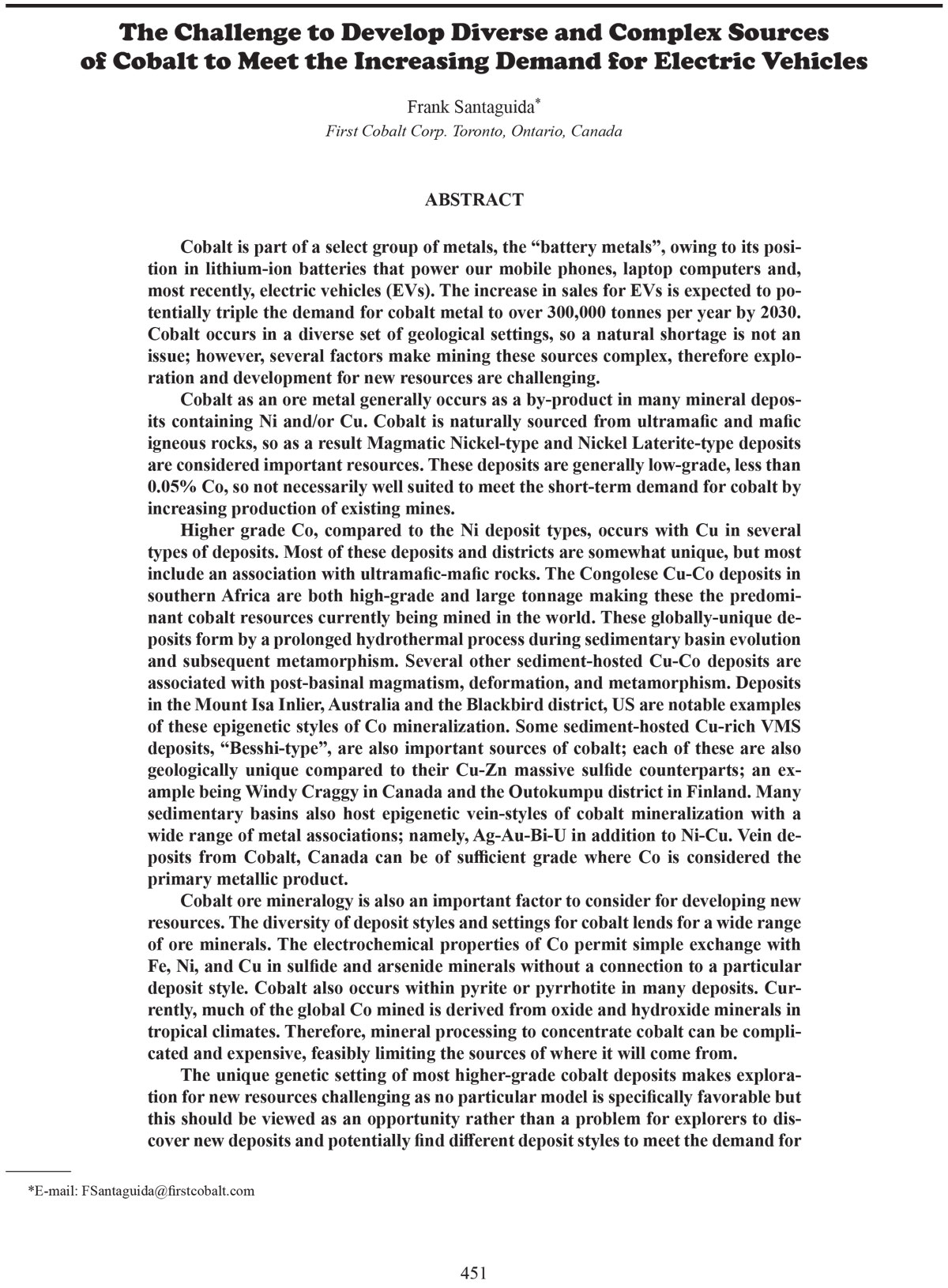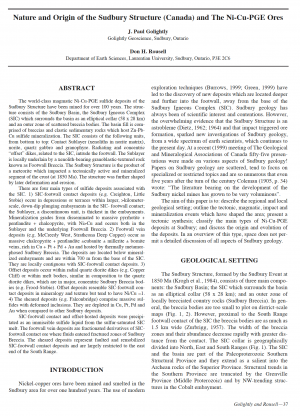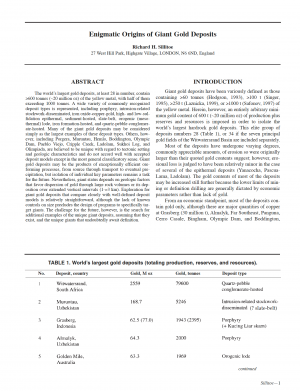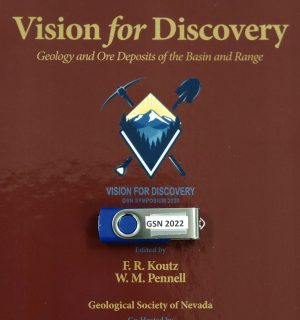Description
Cobalt is part of a select group of metals, the “battery metals”, owing to its position in lithium-ion batteries that power our mobile phones, laptop computers and,
most recently, electric vehicles (EVs). The increase in sales for EVs is expected to potentially triple the demand for cobalt metal to over 300,000 tonnes per year by 2030.
Cobalt occurs in a diverse set of geological settings, so a natural shortage is not an
issue; however, several factors make mining these sources complex, therefore exploration and development for new resources are challenging.
Cobalt as an ore metal generally occurs as a by-product in many mineral deposits containing Ni and/or Cu. Cobalt is naturally sourced from ultramafic and mafic
igneous rocks, so as a result Magmatic Nickel-type and Nickel Laterite-type deposits
are considered important resources. These deposits are generally low-grade, less than
0.05% Co, so not necessarily well suited to meet the short-term demand for cobalt by
increasing production of existing mines.
Higher grade Co, compared to the Ni deposit types, occurs with Cu in several
types of deposits. Most of these deposits and districts are somewhat unique, but most
include an association with ultramafic-mafic rocks. The Congolese Cu-Co deposits in
southern Africa are both high-grade and large tonnage making these the predominant cobalt resources currently being mined in the world. These globally-unique deposits form by a prolonged hydrothermal process during sedimentary basin evolution
and subsequent metamorphism. Several other sediment-hosted Cu-Co deposits are
associated with post-basinal magmatism, deformation, and metamorphism. Deposits
in the Mount Isa Inlier, Australia and the Blackbird district, US are notable examples
of these epigenetic styles of Co mineralization. Some sediment-hosted Cu-rich VMS
deposits, “Besshi-type”, are also important sources of cobalt; each of these are also
geologically unique compared to their Cu-Zn massive sulfide counterparts; an example being Windy Craggy in Canada and the Outokumpu district in Finland. Many
sedimentary basins also host epigenetic vein-styles of cobalt mineralization with a
wide range of metal associations; namely, Ag-Au-Bi-U in addition to Ni-Cu. Vein deposits from Cobalt, Canada can be of sufficient grade where Co is considered the
primary metallic product.
Cobalt ore mineralogy is also an important factor to consider for developing new
resources. The diversity of deposit styles and settings for cobalt lends for a wide range
of ore minerals. The electrochemical properties of Co permit simple exchange with
Fe, Ni, and Cu in sulfide and arsenide minerals without a connection to a particular
deposit style. Cobalt also occurs within pyrite or pyrrhotite in many deposits. Currently, much of the global Co mined is derived from oxide and hydroxide minerals in
tropical climates. Therefore, mineral processing to concentrate cobalt can be complicated and expensive, feasibly limiting the sources of where it will come from.
The unique genetic setting of most higher-grade cobalt deposits makes exploration for new resources challenging as no particular model is specifically favorable but
this should be viewed as an opportunity rather than a problem for explorers to discover new deposits and potentially find different deposit styles to meet the demand for cobalt. The global geopolitical factors for developing cobalt resources provide both
limitations and opportunities. In 2017, the US considered cobalt a critical mineral
providing various means of support for finding new sources making this exploration
space now even more viable.





